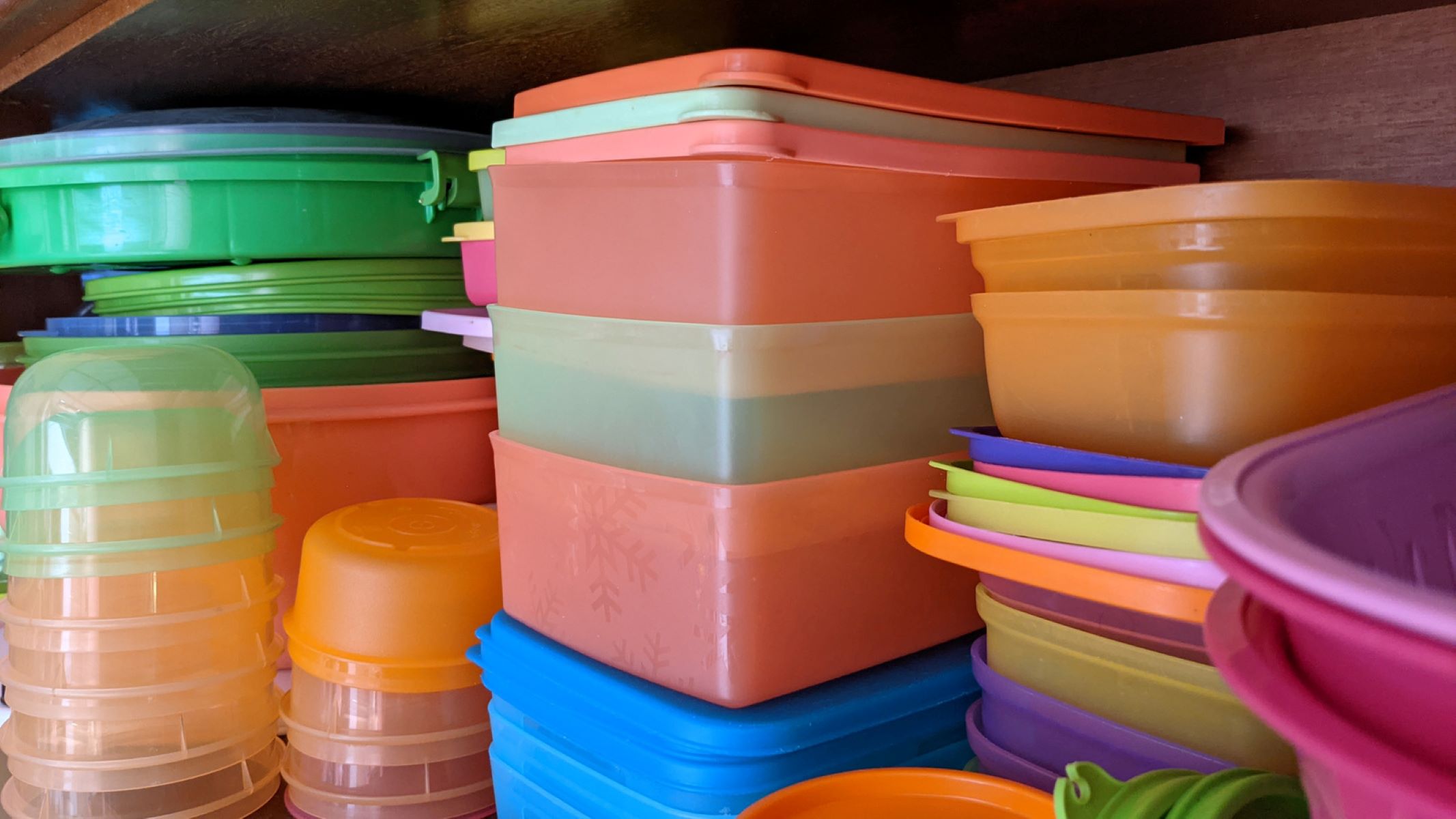

Articles
How To Store Tupperware
Modified: January 8, 2024
Learn the best tips and tricks for organizing your Tupperware collection with our helpful articles. Discover space-saving solutions and efficient storage methods.
(Many of the links in this article redirect to a specific reviewed product. Your purchase of these products through affiliate links helps to generate commission for Storables.com, at no extra cost. Learn more)
Introduction
Having a well-organized kitchen is essential for efficient cooking and meal preparation. One area that often causes frustration and clutter is Tupperware storage. The mismatched lids, disorganized containers, and constant search for the right size can be a headache. However, with a few simple tips and strategies, you can conquer the Tupperware chaos and create a storage system that is both functional and visually appealing.
In this article, we will explore various techniques and solutions for storing Tupperware. From organizing the containers by size to utilizing stackable storage options and making the most of cabinet and pantry space, you’ll find practical ideas to help streamline your Tupperware storage. Let’s dive in!
Key Takeaways:
- Conquer Tupperware chaos by decluttering, sorting by size, and utilizing stackable storage. Maximize space with drawer dividers, hanging storage, and cabinet door solutions. Regular maintenance ensures an efficient and organized system.
- Transform your kitchen with an organized Tupperware storage system. Utilize shelf organizers, pantry and cabinet door space, and hanging storage options. Regular decluttering and maintenance keep your system functional and efficient.
Read more: How To Store Tupperware In Cabinets
Organizing Tupperware
When it comes to organizing Tupperware, the first step is to declutter and get rid of any containers that are damaged, missing lids, or simply unused. Take the time to assess your collection and only keep the pieces you actually use on a regular basis.
Once you have narrowed down your Tupperware collection, it’s time to sort the containers by size. This will make it easier to find what you need when you’re packing leftovers or preparing meals. You can either stack the containers together in groups of similar sizes or invest in a drawer divider or expandable shelf organizer to keep them neatly separated.
Another helpful tip is to store the Tupperware lids separately from the containers. Lids tend to take up a lot of space and often get lost in the shuffle. You can use a small bin or basket to corral the lids, or even install a pegboard on a pantry or cabinet door and hang the lids using S-hooks or binder clips.
Stackable storage options are a game-changer when it comes to Tupperware organization. Look for containers with interlocking lids or nesting sets that can be neatly stacked together. This not only saves space but also makes it easier to grab the container you need without disrupting the entire stack. Plus, stackable containers can be a visual delight, adding a touch of orderliness to your pantry or cabinet shelves.
Utilizing drawer dividers is another effective method for Tupperware organization. By dedicating a drawer or a section of a drawer exclusively for Tupperware storage, you can keep everything neatly arranged and easily accessible. Use dividers of varying sizes to create compartments for different container sizes, and make sure to measure your drawer before purchasing dividers to ensure a perfect fit.
Hanging Tupperware storage is a clever solution for maximizing vertical space in your kitchen. Consider installing a hanging rack or rod where you can hang Tupperware containers by their handles. This not only frees up valuable cabinet or pantry space but also keeps containers within reach and prevents stacking and nesting issues.
Cabinet doors often go unused, but they can be transformed into valuable storage spaces for Tupperware. You can attach hooks or adhesive racks to the inside of the doors to hang small containers, lids, or even measuring spoons and cups. This eliminates clutter and makes it easy to grab what you need while cooking or packing lunches.
Clearing out Unused Tupperware
Clearing out unused Tupperware is an important step in decluttering and optimizing your storage space. Over time, we tend to accumulate a collection of Tupperware that we no longer use or need. By clearing out the unused pieces, you can free up space and make room for the containers you actually use.
Start by taking an inventory of your Tupperware collection. Assess each container to determine if it is still in good condition and if you’ve used it within the past year. If a container has cracks, stains, or missing parts, it’s time to say goodbye and recycle it if possible. Similarly, if you haven’t used a container in months or even years, chances are you won’t be using it in the future either.
Consider donating the gently used Tupperware that you no longer need. There may be local charities or organizations that accept kitchenware donations. This not only helps declutter your space but also allows someone else to benefit from the Tupperware.
If you find it difficult to let go of certain Tupperware items due to sentimental value or the fear of needing them in the future, try the “one-year rule.” Pack away those specific containers in a separate box, label it with the date, and store it out of sight. If after one year you haven’t needed or missed those containers, it’s a good indication that they can be safely discarded or donated.
By clearing out the unused Tupperware, you’ll create a more streamlined and efficient storage system. You’ll also reduce the frustration of searching for lids and matching containers, allowing you to easily access the pieces you use on a regular basis.
Remember, it’s important to regularly assess and declutter your Tupperware collection to prevent unnecessary accumulation and ensure that your storage space is optimized for functionality and organization.
Sorting Tupperware by Size
Sorting Tupperware containers by size is a practical and efficient way to keep your storage system organized. Not only does it make it easier to find the container you need when preparing meals or packing leftovers, but it also maximizes the use of your storage space.
Start by gathering all your Tupperware containers and separating them into different piles based on their size. Group together small containers, medium-sized containers, and large containers. If you have a lot of containers, you can further divide them into additional size categories, such as extra-small or extra-large.
Once you have your containers sorted, consider investing in storage solutions that cater specifically to these different sizes. Stackable containers with interlocking lids are an excellent choice as they can be neatly organized and take up minimal space. Look for sets that come in various sizes, allowing you to easily stack them together.
If you prefer to keep your containers in a drawer, use drawer dividers to create compartments for each size category. This will prevent smaller containers from getting lost or buried under larger ones. Make sure to measure your drawer before purchasing dividers to ensure a perfect fit.
Another option for sorting Tupperware by size is to use expandable shelf organizers. These can be placed in your pantry or cabinet and allow you to create additional vertical space for storing your containers. Adjust the shelves to accommodate different size categories, and arrange the containers accordingly.
Labeling can also be beneficial when sorting Tupperware by size. Use adhesive labels or a label maker to mark each container’s size or category. This will make it even easier to find the right container when you need it and simplify the process of putting everything back in its designated spot after use.
By sorting Tupperware containers by size, you’ll save time searching for the container you need and maintain a neat and organized storage system. It’s a simple but effective method that will bring a sense of order to your kitchen and make your meal preparation process smoother and more efficient.
Storing Tupperware Lids
Tupperware lids often seem to have a knack for going missing or causing clutter in our kitchen cabinets. To keep your Tupperware lids organized and easily accessible, it’s important to establish a dedicated storage system for them.
One simple solution is to use a small bin or basket to corral the lids. Place the bin or basket in a cabinet or pantry shelf, and stack the lids vertically inside. This not only prevents them from rolling around and getting lost but also makes it easy to see and grab the lid you need.
If you’re looking for a more innovative approach, consider installing a pegboard on a pantry or cabinet door. Attach hooks to the pegboard and hang the Tupperware lids using S-hooks or binder clips. This allows you to display the lids like a mini art installation and keeps them neatly organized and within reach.
Clear plastic storage containers with dividers are another effective solution for storing Tupperware lids. Choose a container with compartments that are large enough to fit various lid sizes. Store the lids vertically in each compartment, and label each section for easy identification.
For those who prefer a sleek and minimalist look, consider utilizing the inside of your cabinet doors. Attach adhesive racks or hooks to the inside of the doors and hang the lids vertically. This makes use of otherwise wasted space and keeps the lids easily accessible while maximizing your cabinet storage.
If you have a large collection of Tupperware lids, consider investing in a lid organizer. These come in various designs and can be placed vertically or horizontally in a cabinet or pantry. Lid organizers typically have adjustable slots that accommodate different lid sizes, keeping them organized and easy to find.
Remember, it’s important to establish a dedicated storage system for Tupperware lids that works best for your space and organizational needs. By keeping the lids organized and easily accessible, you’ll eliminate the frustration of searching for the right lid and make your Tupperware experience much smoother and efficient.
Read more: How To Store Cigars In Tupperware
Stackable Storage Solutions
One of the key challenges when it comes to storing Tupperware is maximizing space and maintaining an organized system. Stackable storage solutions are a game-changer in this regard, allowing you to make the most of your available space while keeping your Tupperware easily accessible.
Stackable containers with interlocking lids are a fantastic option for storing Tupperware. These containers are designed to fit perfectly on top of one another, creating a neat and stable stack. The interlocking lids ensure that the containers stay securely sealed and prevent any accidental spills or leaks.
When using stackable containers, it’s important to choose a set that offers various sizes. Look for sets that include small, medium, and large containers so that you have the flexibility to store different types of leftovers or ingredients. This way, you can stack the containers based on their size, making the most efficient use of your storage space.
One handy tip is to nest smaller containers inside larger ones when they’re not in use. This helps save space and keeps the lids and containers together, preventing any mismatching or clutter. Just make sure that the containers are clean and completely dry before nesting them together to avoid any moisture or odor buildup.
Another option for stackable storage solutions is to invest in stackable wire racks. These racks can be placed in your pantry or cabinet, creating additional vertical storage space for your Tupperware. Simply stack your containers on the racks, ensuring that the lids are securely in place. This allows you to easily see and access your containers, making it a breeze to find the one you need.
If you have limited space in your cabinets or pantry, consider using clear acrylic or plastic bins with lids. These bins can be stacked on top of one another, and you can easily see the contents inside. They also provide an added layer of protection, keeping your Tupperware safe from dust or any potential spills in the surrounding area.
When using stackable storage solutions, it’s important to maintain a sense of order. Keep similar-sized containers together and label the containers or the shelves they’re stored on. This not only helps you locate items quickly but also ensures that containers are placed back in the correct position after use.
By utilizing stackable storage solutions, you can streamline your Tupperware storage while maximizing the space available. This not only keeps your kitchen organized but also makes it easier to find and access your Tupperware for meal prep and storage needs.
Utilizing Drawer Dividers
When it comes to organizing Tupperware, utilizing drawer dividers can be a game-changer. Drawer dividers help create separate compartments for different-sized containers, keeping them neatly organized and easily accessible.
Start by measuring the interior dimensions of your drawer to determine the amount of space available. This will help you choose the appropriate size and number of dividers needed. Keep in mind that dividers come in various styles, including adjustable and expandable options, allowing for customization to fit your specific drawer dimensions.
Before purchasing dividers, take inventory of your Tupperware collection and assess your storage needs. Consider how you want to organize your containers and lids. Do you prefer separating them by size, or do you want to allocate sections for different types of containers? This will help determine the layout and configuration of your drawer dividers.
Once you have your dividers, lay them out in your drawer according to your desired configuration. Place the dividers vertically to create individual compartments for each size or type of container. Make sure to leave enough space between the dividers to accommodate the dimensions of your largest containers.
When placing your Tupperware containers into the compartments, ensure that they are stacked or nested properly and that their corresponding lids are paired and stored nearby. This will help maintain a streamlined system and prevent any misplacement or mismatching when you need to retrieve a container.
Labeling the compartments can also be helpful, especially if you have a large Tupperware collection or if multiple family members share the same drawer. Use adhesive labels or a label maker to mark each compartment with the size or type of containers it holds. This will make it even easier to locate and store items in their designated spots.
Utilizing drawer dividers not only keeps your Tupperware organized but also minimizes the risk of containers sliding around or toppling over when you open and close the drawer. This is particularly important if you have deep drawers or if the Tupperware drawer is located near a frequently used area in the kitchen.
Regularly assess and rearrange your drawer dividers as needed. As your Tupperware collection evolves or when you acquire new containers, you may need to adjust the layout of the dividers to accommodate the changes. Keep in mind that organizing is an ongoing process, and it’s essential to adapt and refine your systems to suit your storage needs.
By utilizing drawer dividers, you can transform your Tupperware drawer into an organized and efficient space. Say goodbye to rummaging through a jumbled mess and hello to a neatly arranged selection of containers and lids, ready to streamline your meal prep and storage activities.
To store Tupperware effectively, stack containers with their lids on to save space and keep them organized. Store them in a dedicated cabinet or drawer to prevent clutter.
Hanging Tupperware Storage
Hanging Tupperware storage is a creative and space-saving solution that maximizes vertical storage space in your kitchen. By utilizing unused wall or cabinet door space, you can free up valuable shelf or counter space and keep your Tupperware easily accessible and organized.
One option for hanging Tupperware storage is to install a hanging rack or rod. Choose a location in your kitchen where it’s convenient for you to access the Tupperware, such as the side of a cabinet or a wall near your food prep area.
Hang the Tupperware containers by their handles on the rack or rod. Make sure to choose a sturdy rack that can support the weight of the containers, especially if you have larger or heavier Tupperware pieces. Alternatively, you can attach individual hooks to the wall or cabinet door and hang the containers using their handles.
This hanging method not only keeps your Tupperware visible and easily accessible but also prevents stacking and nesting issues. You won’t have to worry about dislodging and struggling to separate containers when you need to grab one.
For hassle-free lid storage, attach adhesive hooks or binder clips to the bottom of the hanging rack or rod. Use these hooks or clips to hang the lids of the Tupperware containers, ensuring that they stay organized and within reach. This prevents lid clutter and eliminates the need to search for the correct lid to match each container.
If you prefer a more concealed storage solution, consider using a pocket organizer. These organizers typically have clear pockets that can accommodate Tupperware containers of various sizes. Hang the pocket organizer on a rod or hook, and insert the containers into the pockets. This keeps them visible, easy to access, and prevents them from sliding around or falling out.
Another clever approach to hanging Tupperware storage is to repurpose a dish drying rack. Mount the dish drying rack on a wall or the inner side of a cabinet door and use the slots to place your Tupperware containers. The slots will keep the containers upright and separated, eliminating the need for stacking and nesting.
When utilizing hanging Tupperware storage, ensure that the containers are clean, dry, and properly sealed to prevent any food contamination. Regularly inspect and clean both the containers and the hanging storage system to maintain hygiene and functionality.
By incorporating hanging Tupperware storage in your kitchen, you can declutter your cabinets and free up counter space. This storage method saves you valuable time and frustration when searching for the right container and keeps your kitchen organized and efficient.
Utilizing Cabinet Door Space
When it comes to optimizing storage in your kitchen, don’t overlook the potential of your cabinet door space. By utilizing the inside of cabinet doors, you can create additional storage areas for your Tupperware and maximize the available space in your kitchen.
One of the simplest ways to utilize cabinet door space is by attaching hooks to the inside of the doors. These hooks can be used to hang smaller Tupperware containers, lids, or even measuring spoons and cups. This keeps them easily accessible and prevents them from taking up valuable shelf space.
Adhesive metal or plastic hooks are ideal for this purpose, as they can securely hold the weight of the items being hung. Make sure to clean the surface of the cabinet door before attaching the hooks to ensure a strong and long-lasting grip.
Another method for utilizing cabinet door space is by installing adhesive racks or shelves. These racks can hold Tupperware lids, cutting boards, or other flat items. The racks can be easily attached to the inside of the cabinet door, creating a convenient storage solution that keeps everything organized and accessible.
Wire or acrylic magazine racks can also be repurposed as storage solutions for cabinet doors. Mount them inside the doors horizontally and use them to store Tupperware lids or even recipe books. This keeps everything neatly in place and prevents clutter on your countertops or shelves.
For those who prefer a concealed storage system, consider using adhesive command hooks or magnetic strips. Attach the hooks or strips to the inside of the cabinet door and use them to hold metal or magnetic Tupperware containers or lids.
If you have deep cabinet doors, you can take advantage of the vertical space by attaching clear adhesive pockets. These pockets are typically designed for organizing shoes or small accessories but can be repurposed to hold Tupperware lids or small containers. The transparent pockets enable easy visibility and access to your stored Tupperware items.
When utilizing cabinet door space, it’s important to ensure that the additional weight does not affect the functionality of the door or cause it to become saggy. Be mindful of the weight capacity of the hooks or racks you use, and distribute the weight evenly to maintain balance.
By utilizing cabinet door space, you can free up valuable shelf space and create a more organized and functional kitchen. Take advantage of this often-overlooked storage area to keep your Tupperware and kitchen essentials within reach while maintaining a clutter-free environment.
Read more: How To Store Blueberries In Tupperware
Storing Tupperware in Pantry
The pantry is a prime storage area in the kitchen, and with some thoughtful planning, it can become an efficient space for storing your Tupperware. By dedicating a section of your pantry to Tupperware storage, you can keep your containers easily accessible, neatly organized, and visually appealing.
Start by designating a specific shelf or area in your pantry for your Tupperware. This section should be easily accessible and large enough to accommodate your collection. Clear out any unnecessary items or expired food to make space for your containers.
One practical method for storing Tupperware in the pantry is to use shelf organizers. These organizers typically consist of stackable shelves that create additional layers within your pantry shelves. They provide extra vertical space for your Tupperware containers, allowing you to maximize storage and keep everything in order.
If you have deep pantry shelves, consider using slide-out bins or drawers. These bins can be easily pulled out, providing easy access to your Tupperware containers without the need to reach deep into the back of the shelf. Label the bins or drawers to further enhance organization and ensure that each container has a designated spot.
Incorporating clear storage bins or baskets is another effective strategy. Group similar-sized containers together in these clear bins, making it easy to see and grab the container you need. Labels on the bins can also help identify specific categories of Tupperware, such as meal prep containers, snack containers, or leftover storage.
If you have limited shelf space in your pantry, consider utilizing the floor or lower areas for Tupperware storage. Invest in stackable storage bins that can be sturdily placed on the floor. Label the bins accordingly, and easily access your containers without having to reach high shelves.
Don’t forget to consider the pantry door as a potential storage area. Install adhesive hooks or racks on the inside of the pantry door to hang Tupperware lids, small containers, or measuring cups. Utilizing this vertical space keeps your lids organized and accessible, making it effortless to find the right lid for each container.
Finally, it’s important to periodically declutter and reorganize your Tupperware storage in the pantry. Regularly assess which containers you use frequently and which ones can be donated or discarded. Keep an eye out for any damaged or mismatched containers that may need replacement.
By dedicating a specific section of your pantry to Tupperware storage and employing organizing solutions, you can create a functional and visually pleasing storage system. This ensures that your Tupperware containers are easily accessible, well-maintained, and ready to assist you in your meal prep and food storage needs.
Using Shelf Organizers
Shelf organizers are a fantastic addition to any kitchen, providing a practical and efficient solution for organizing and maximizing storage space. When it comes to storing your Tupperware, utilizing shelf organizers can help streamline your storage system, making it easy to access and find the containers you need.
Shelf organizers come in various shapes and sizes, allowing for customization based on your specific pantry or cabinet dimensions. They are typically stackable and adjustable, making it simple to create multiple layers and maximize vertical space.
To start using shelf organizers for your Tupperware storage, measure the available space in your pantry or cabinet. Choose organizers that fit neatly into your designated storage area and consider the height of your Tupperware containers to ensure proper clearance.
Once you have your shelf organizers, begin by grouping your Tupperware containers by size or type. Place the larger or less frequently used containers on the lower shelves or in the back, while keeping the smaller or more frequently used ones at the front or on the upper shelves for easy access.
Stackable shelf organizers allow you to create layers within your pantry or cabinet shelves. Place one layer of shelf organizers on a shelf, then stack another layer on top of it. This creates additional vertical storage space and prevents Tupperware containers from becoming disorganized or difficult to access.
Labeling can greatly enhance the organization and efficiency of your Tupperware storage system. Attach adhesive labels to the edge or front of each shelf organizer, indicating the size or type of Tupperware that belongs there. This makes it easy to quickly locate and put away your containers after use.
Square or rectangular shelf organizers are particularly ideal for Tupperware storage, as they can accommodate a variety of container shapes and sizes. The flat nature of these organizers prevents containers from tipping over and keeps them neatly aligned.
Clear acrylic or plastic shelf organizers provide the additional benefit of visibility. Being able to see your Tupperware containers at a glance eliminates the need to rummage through stacks or take everything out to find the right container. This visibility also helps to prevent containers from being forgotten or left unused.
Remember to periodically assess and adjust your Tupperware storage with shelf organizers. As your collection evolves or changes, you may need to rearrange the organizers or purchase additional ones to accommodate new containers or sizes.
Using shelf organizers is a practical and efficient solution for storing your Tupperware. By utilizing these organizers, you can create a well-organized and easily accessible storage system that maximizes your kitchen space and simplifies your meal prep and food storage routines.
Maintaining Tupperware Storage System
Once you have established an organized Tupperware storage system, it’s important to maintain it to ensure its long-term effectiveness and efficiency. Regular maintenance will help prevent clutter and keep your containers easily accessible. Here are some tips to help you maintain your Tupperware storage system:
Regular Decluttering: Set a schedule to periodically declutter your Tupperware collection. Take stock of your containers and lids to identify any damaged, worn-out, or mismatched pieces. Discard or recycle those that are no longer usable and donate any containers you no longer need.
Match Lids and Containers: Regularly match lids with their corresponding containers to avoid accumulating orphaned lids or containers without lids. This will maintain a functional storage system and prevent frustration when you’re in need of a specific size or type of container.
Keep It Clean: Clean your Tupperware containers and lids regularly to prevent any lingering food odors or stains. This includes washing them thoroughly after each use. Make sure the containers are completely dry before stacking or nesting them together to avoid any moisture buildup or potential damage.
Stack and Store Properly: When returning containers to your storage system, stack or nest them properly to maximize space. Avoid overfilling containers, as this can cause them to warp or lose their form. Additionally, stack containers with the lids on to save space, but make sure the lids are securely closed to prevent any spills or leaks.
Rotate and Use: Regularly rotate and use your Tupperware to prevent containers from sitting idle for extended periods. Make an effort to use a variety of container sizes to avoid frequently accessing only a select few. This will maintain the usability and condition of all your containers.
Check for Damage: Inspect your Tupperware regularly for any signs of wear and tear. Check for cracks, warping, or damage to the lids. Replace any damaged pieces to maintain the effectiveness of your storage system and prevent any food contamination or spills.
Reassess as Needed: As your needs change or your collection grows, reassess your storage system and adapt it accordingly. Purchase additional organizers or make adjustments to accommodate new containers or sizes. Keeping your storage system up-to-date will ensure you continue to have a functional and efficient solution for your Tupperware.
Maintain Orderliness: Encourage household members to maintain the organization of the Tupperware storage system. Foster a habit of returning containers to their designated spots after use. By consistently organizing and maintaining order, you can avoid the accumulation of clutter and prevent the need for frequent reorganization.
By following these maintenance tips, you can ensure that your Tupperware storage system remains effective and functional. Regular decluttering, proper cleaning, and organization will help you maintain an organized and accessible storage system for your Tupperware, making meal preparation and food storage much more efficient and enjoyable.
Conclusion
Storing Tupperware doesn’t have to be a frustrating challenge. With the right strategies and solutions, you can create an organized and efficient storage system that not only keeps your Tupperware easily accessible but also adds a sense of order and tidiness to your kitchen.
By following the tips and techniques outlined in this article, you can embark on your journey to conquer the Tupperware chaos. Start by decluttering and clearing out unused containers, then sort the remaining Tupperware by size to make it easier to locate what you need. Utilize stackable storage options and drawer dividers to make the most of your available space while keeping containers and lids neatly separated and organized.
Consider utilizing hanging storage options on racks or cabinet doors to maximize vertical storage space and make containers easily accessible. Don’t overlook the potential of your pantry and cabinet door space, as they can be transformed into efficient storage areas using various hooks, racks, or pocket organizers.
Make use of shelf organizers to create layers and maximize the vertical space in your pantry or cabinet. Label and maintain your Tupperware storage system to ensure that containers and lids are always in their designated spots. Regularly declutter, clean, and inspect your Tupperware to keep your storage system functional and efficient.
Through regular maintenance and organization, you can enjoy the benefits of a well-organized Tupperware storage system that simplifies your cooking and meal-preparation routines. With everything in its place, you’ll no longer waste time searching for mismatched containers or struggling to find the right lid.
So, take control of your Tupperware chaos today. Implement these storage solutions and strategies that best fit your kitchen and lifestyle. Say goodbye to the frustration and hello to a beautifully organized and efficient Tupperware storage system that will enhance your cooking experience and bring order to your kitchen.
Frequently Asked Questions about How To Store Tupperware
Was this page helpful?
At Storables.com, we guarantee accurate and reliable information. Our content, validated by Expert Board Contributors, is crafted following stringent Editorial Policies. We're committed to providing you with well-researched, expert-backed insights for all your informational needs.
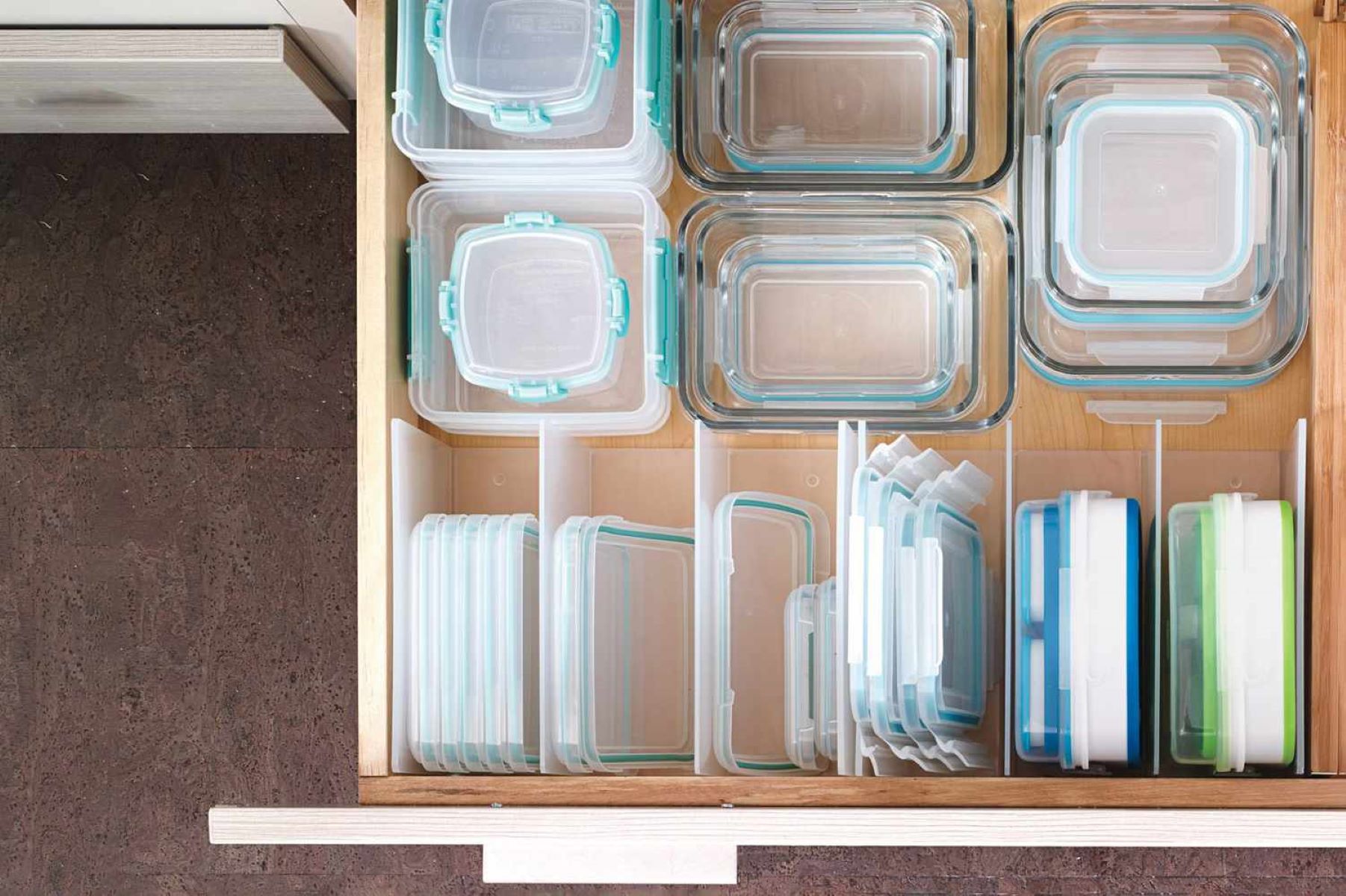
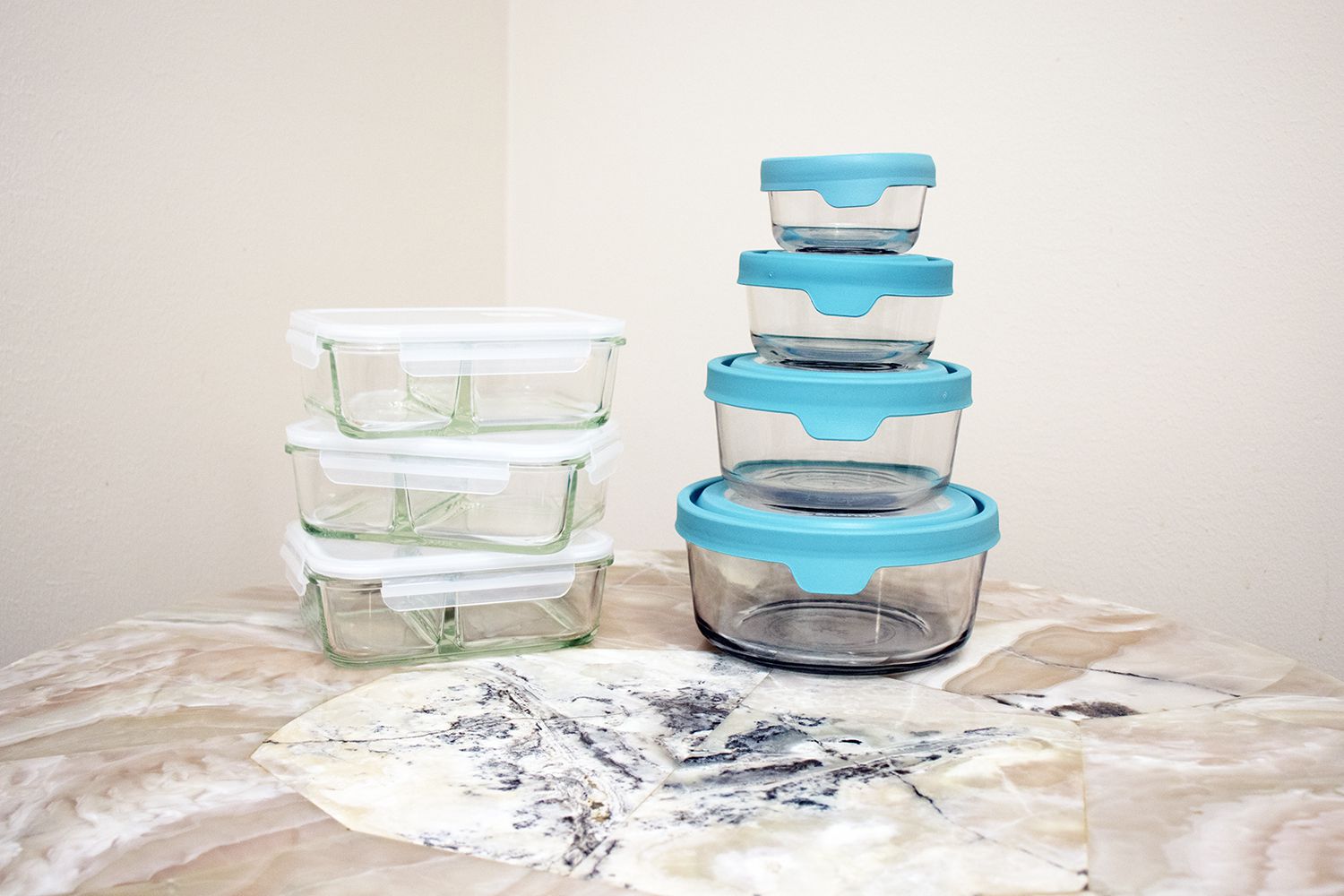
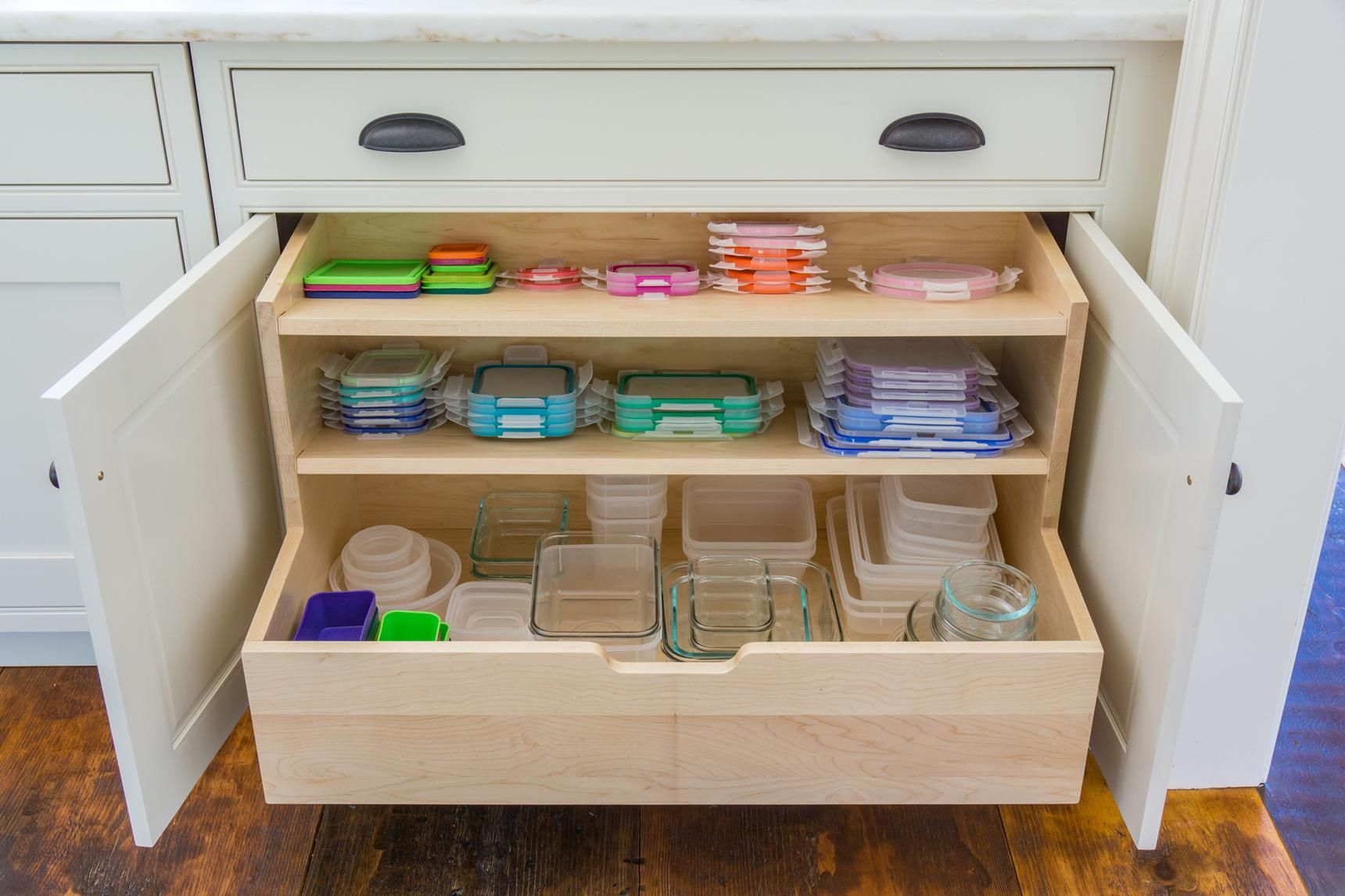
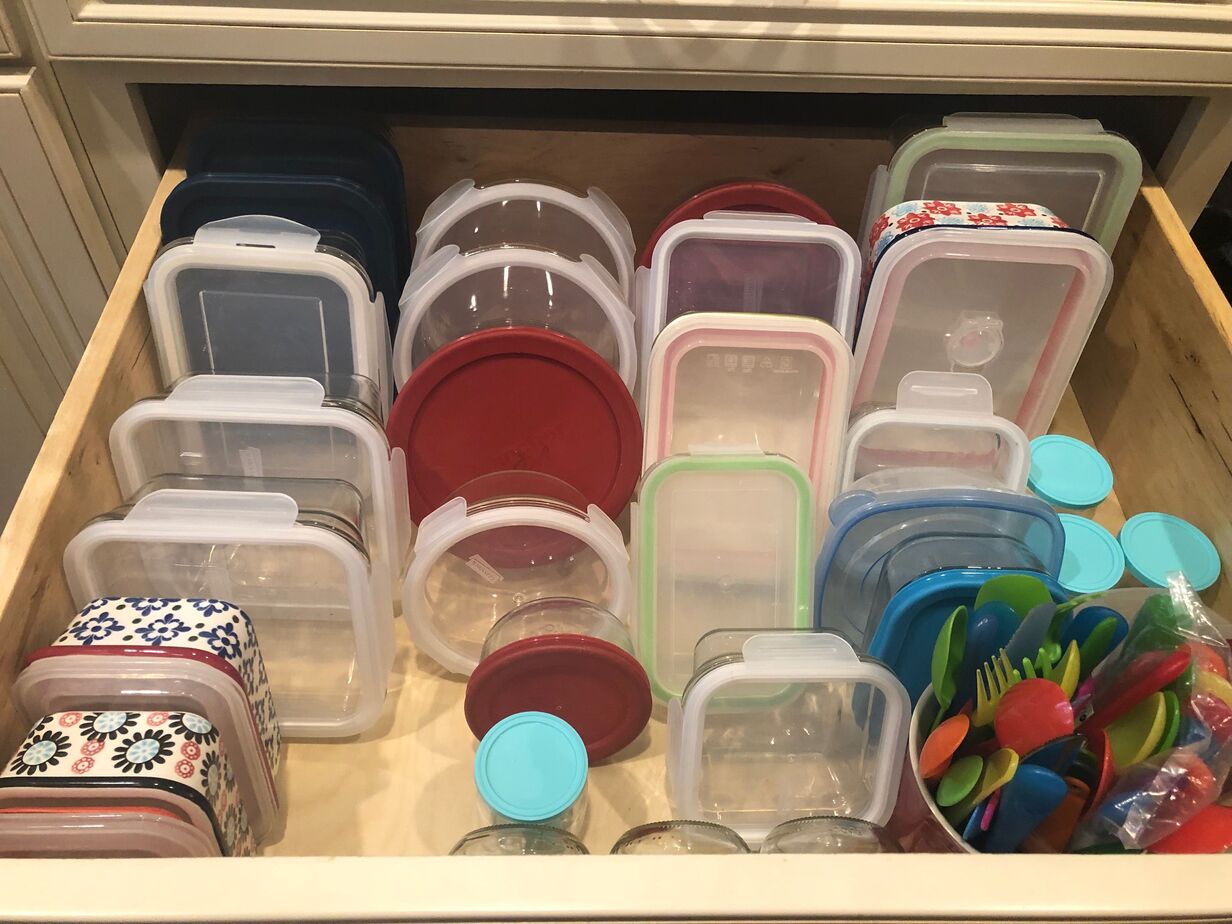
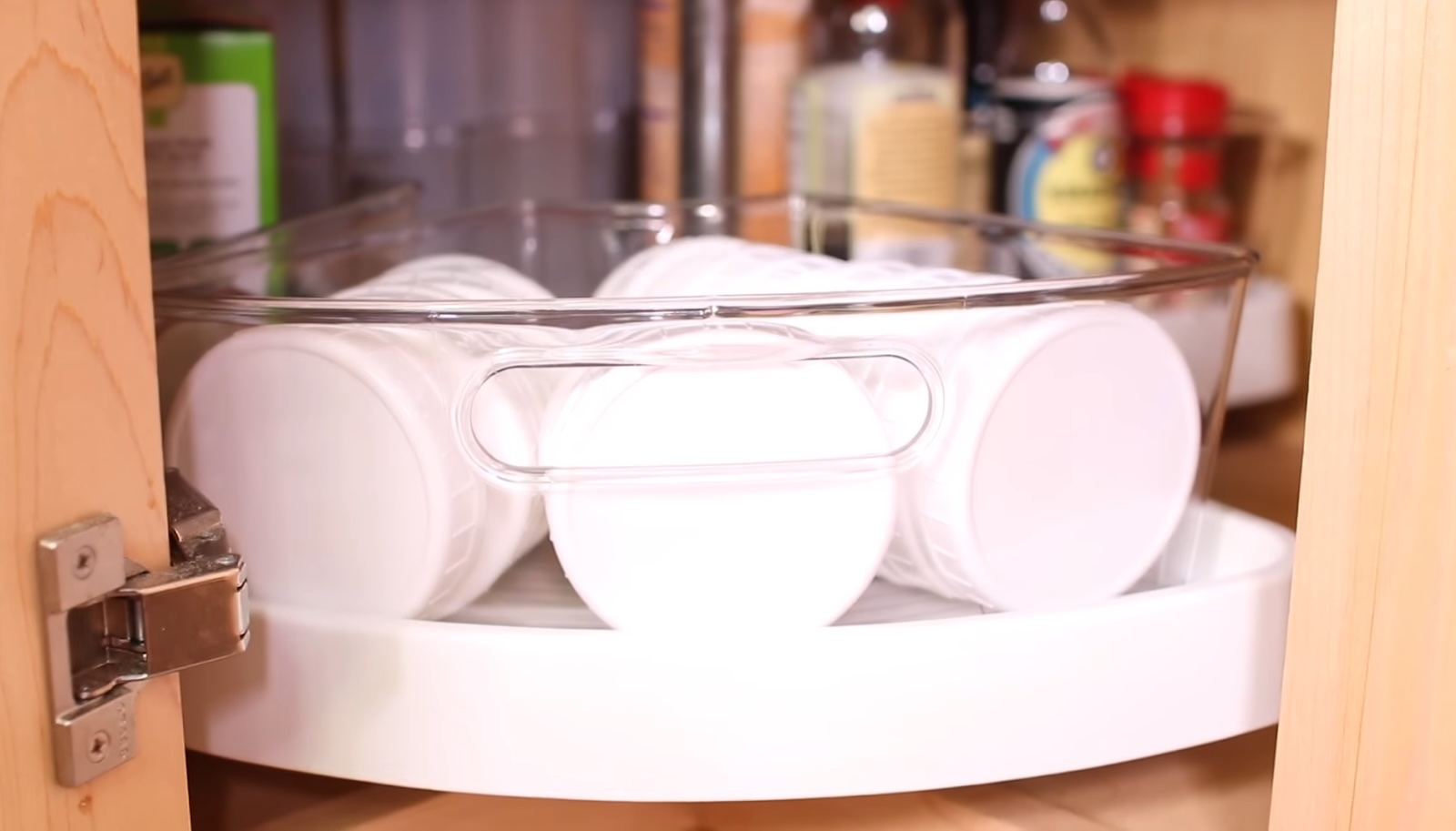
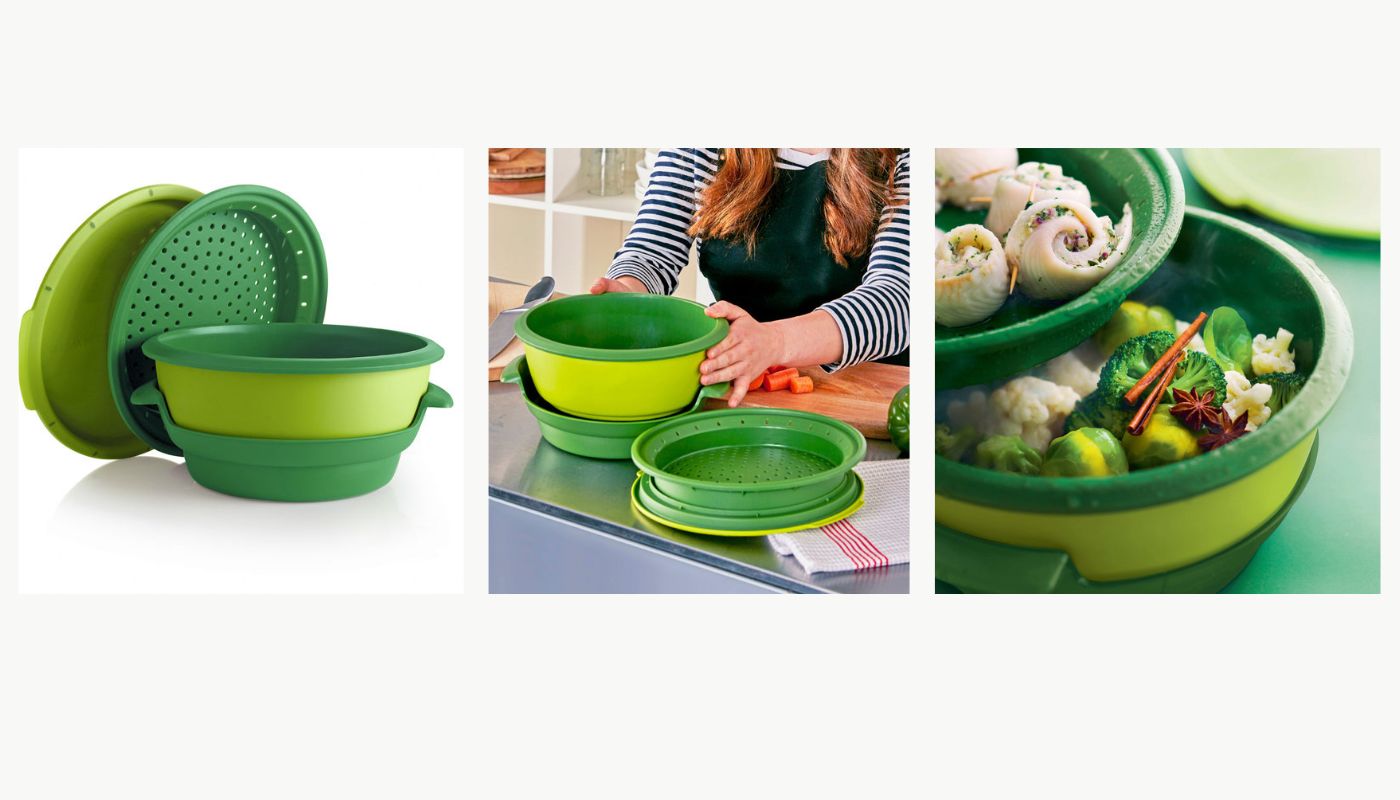
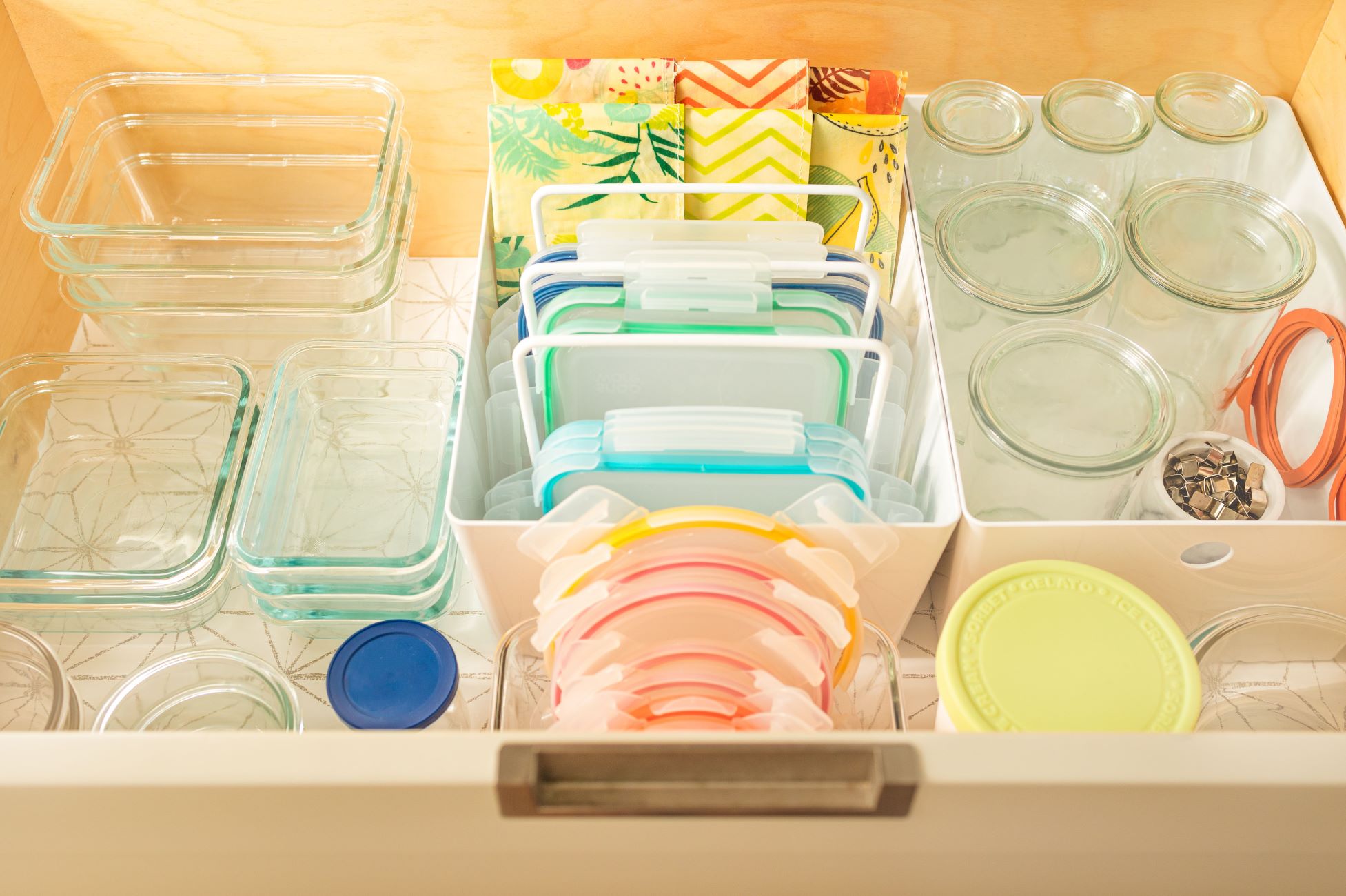
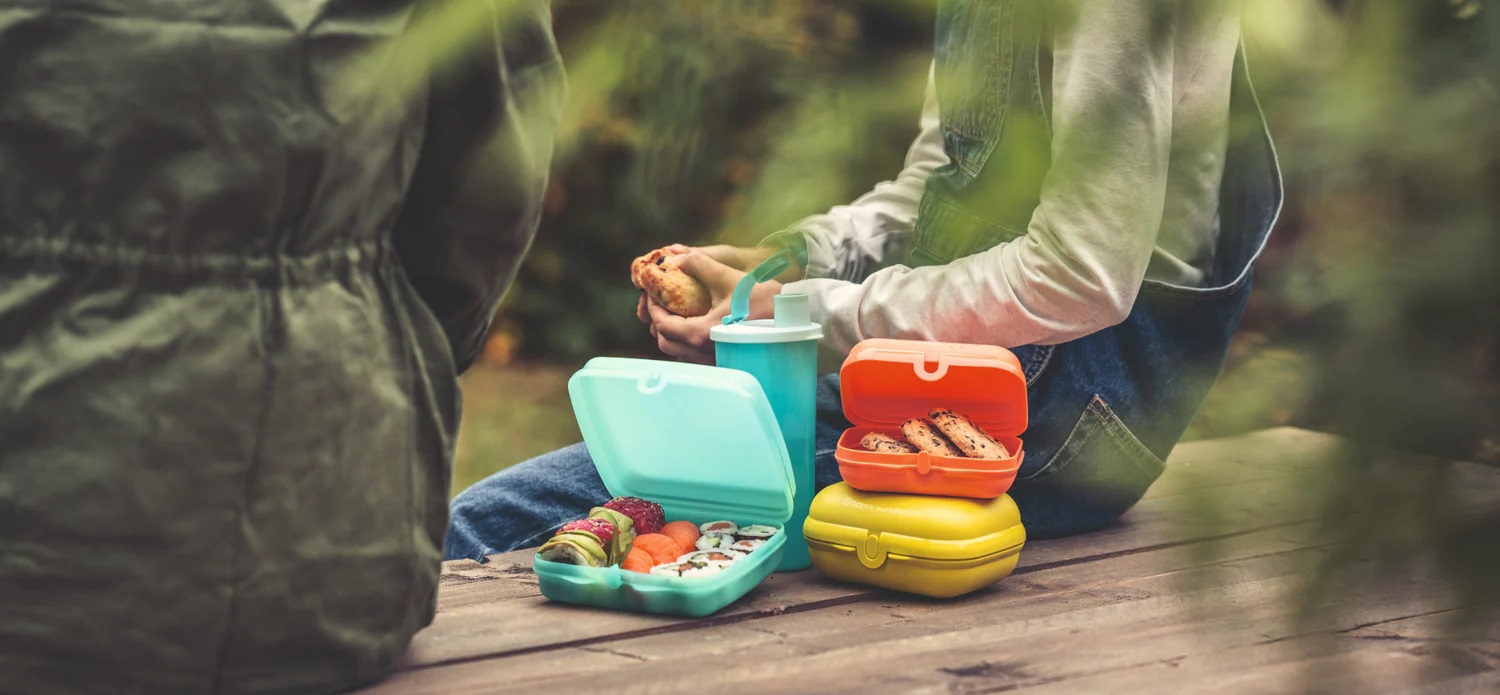
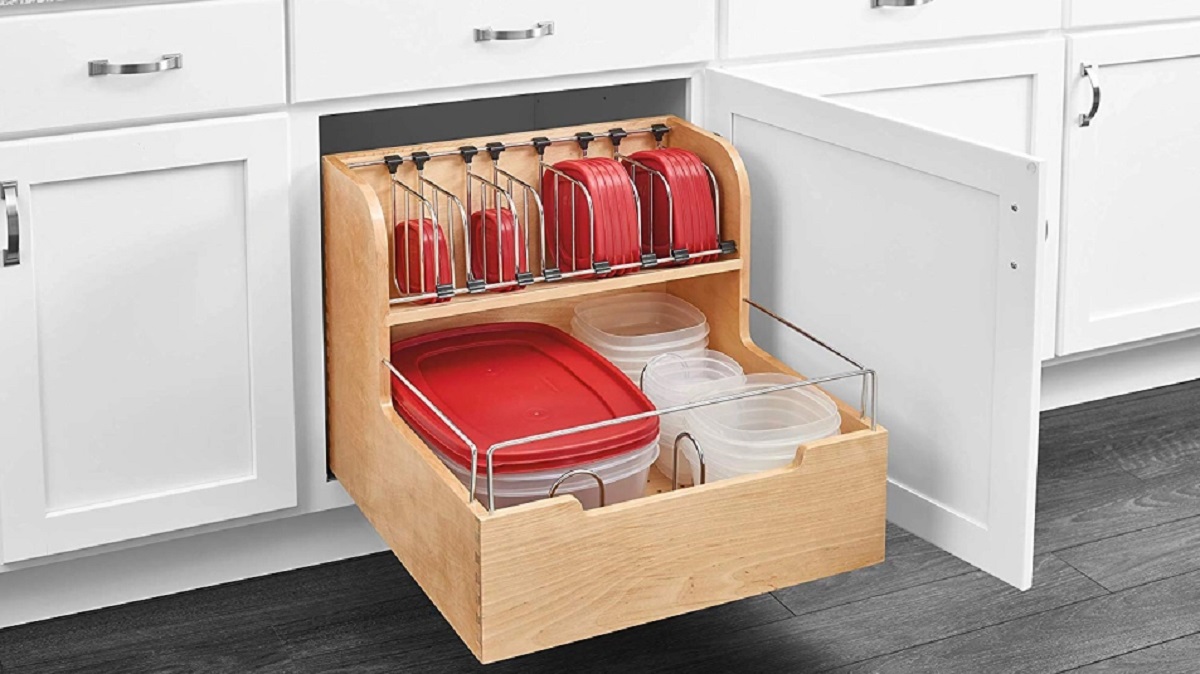
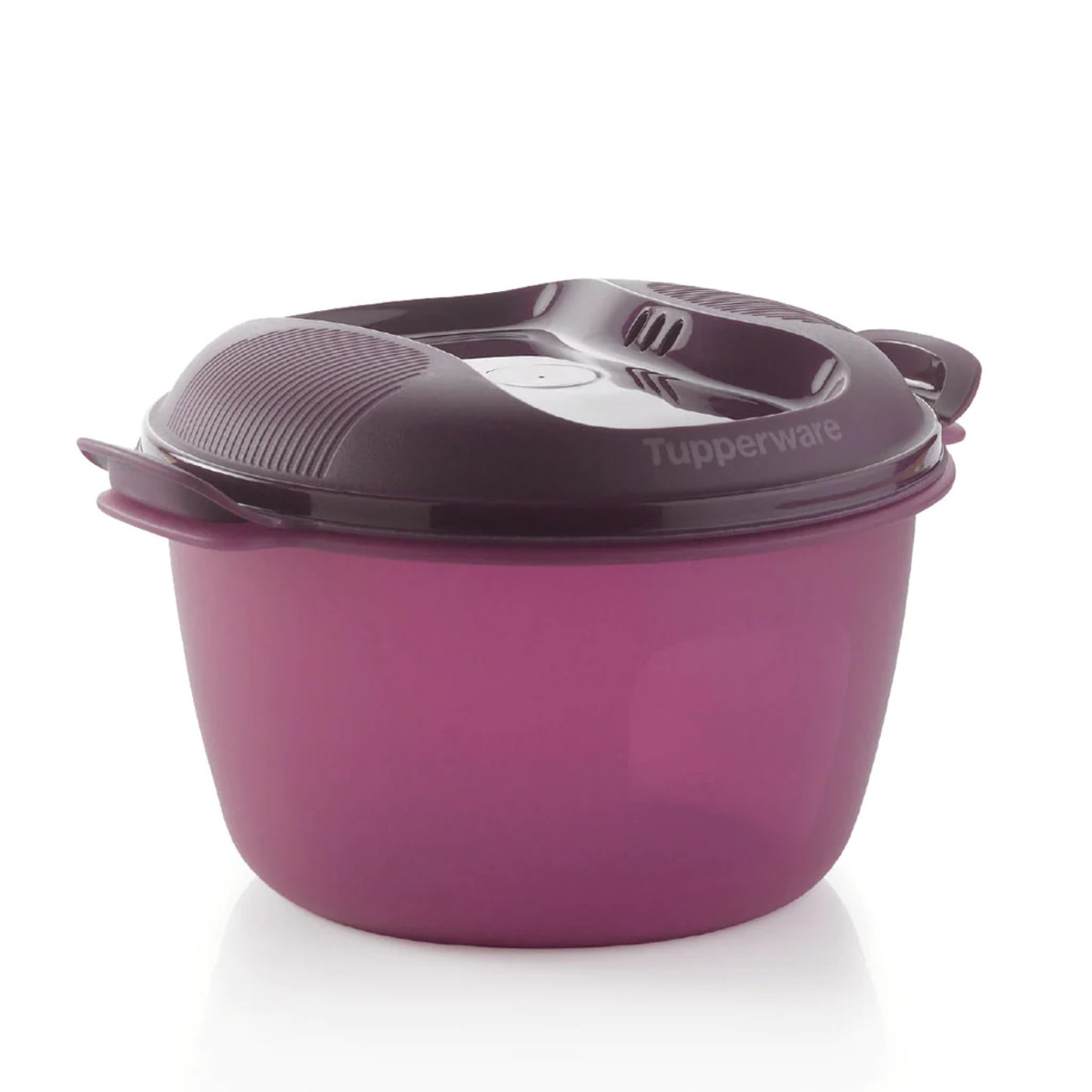
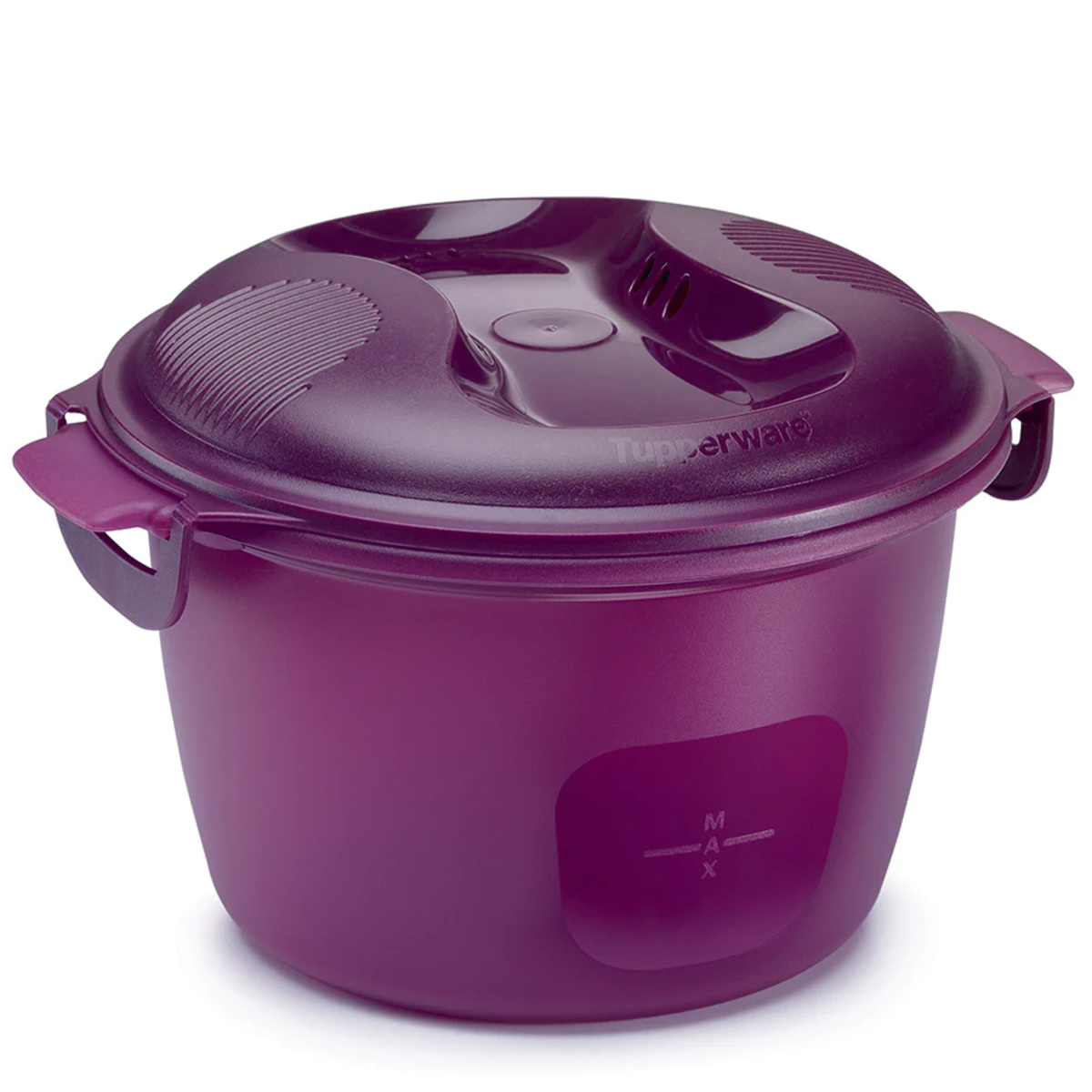
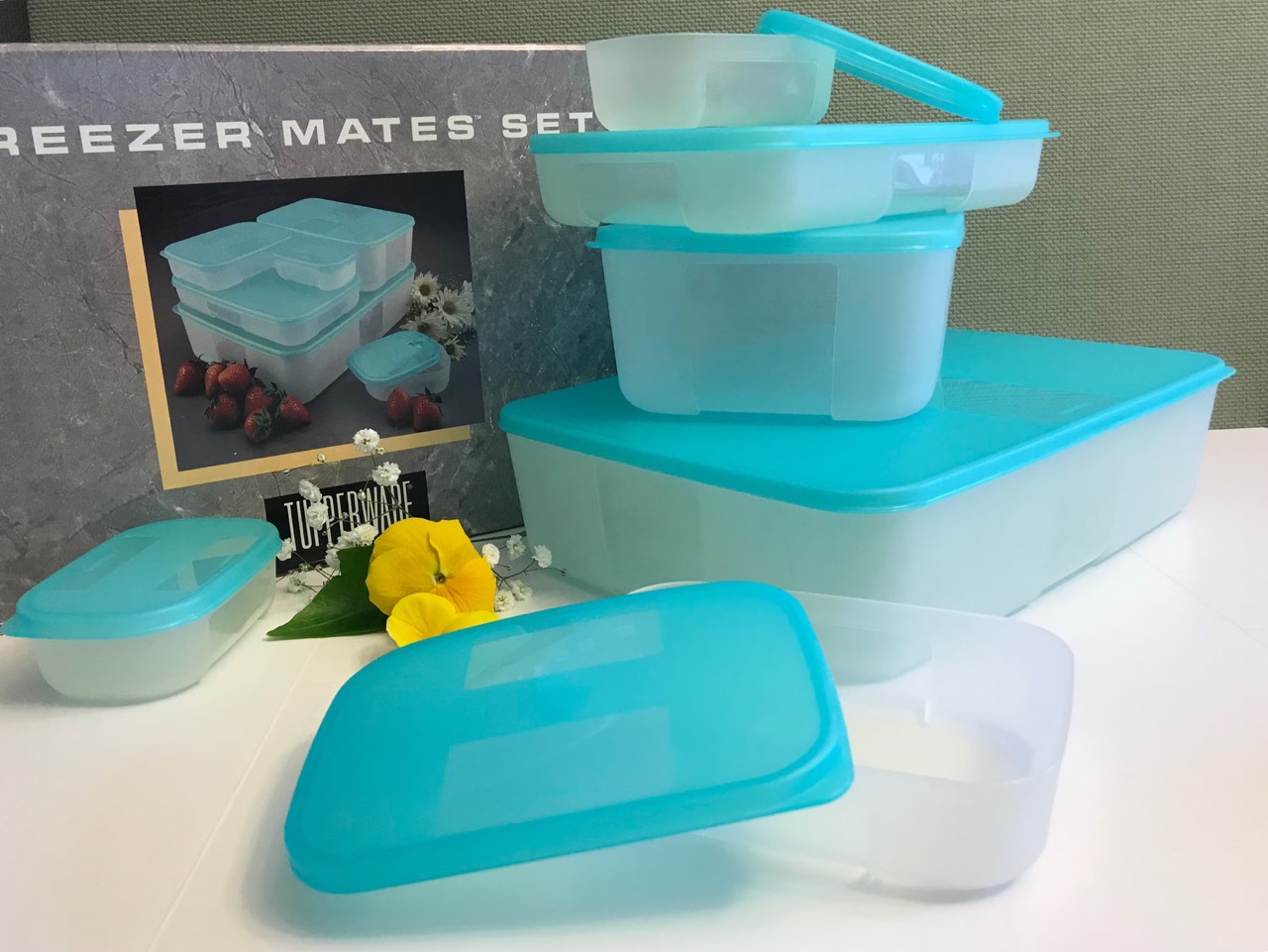
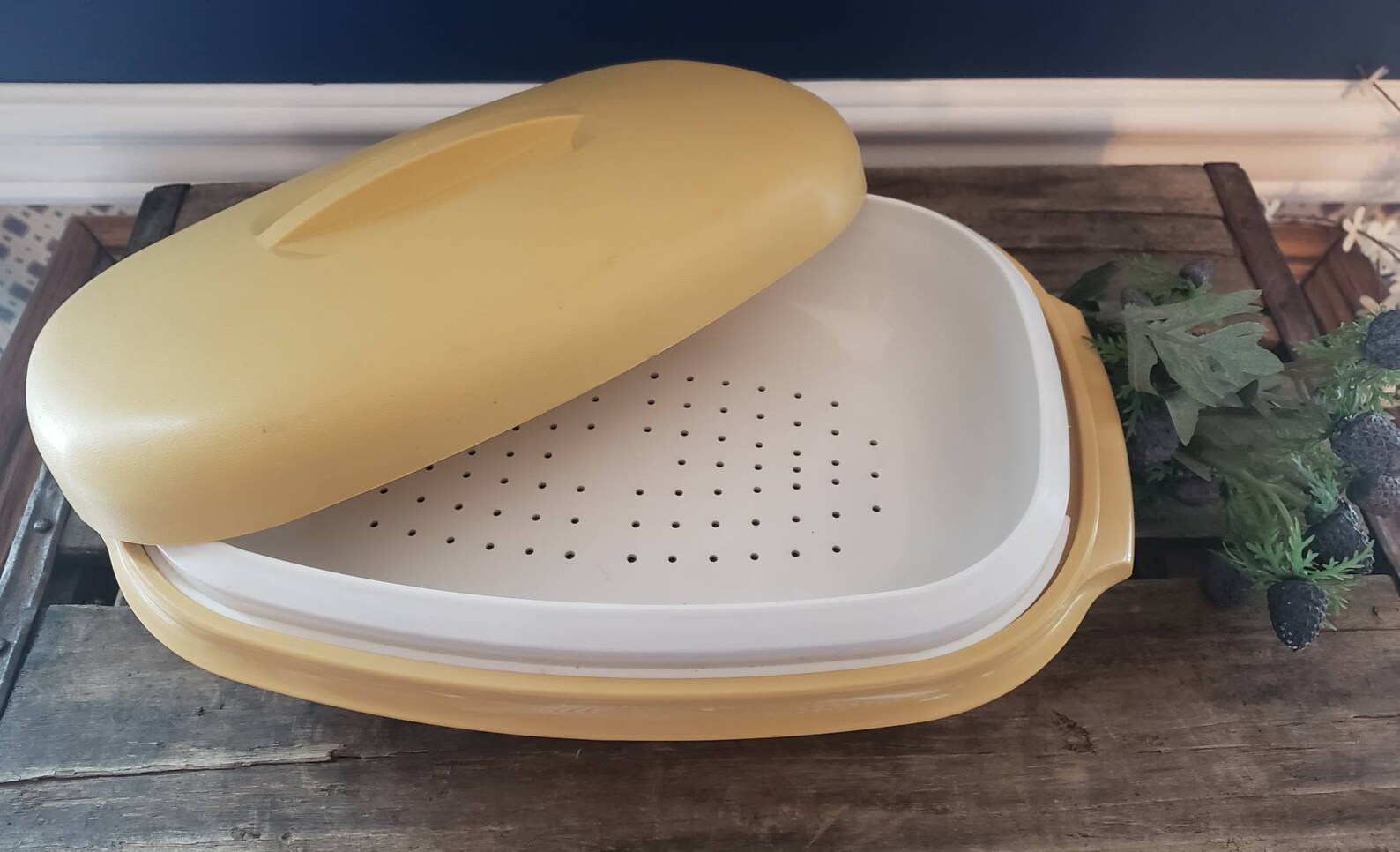

0 thoughts on “How To Store Tupperware”